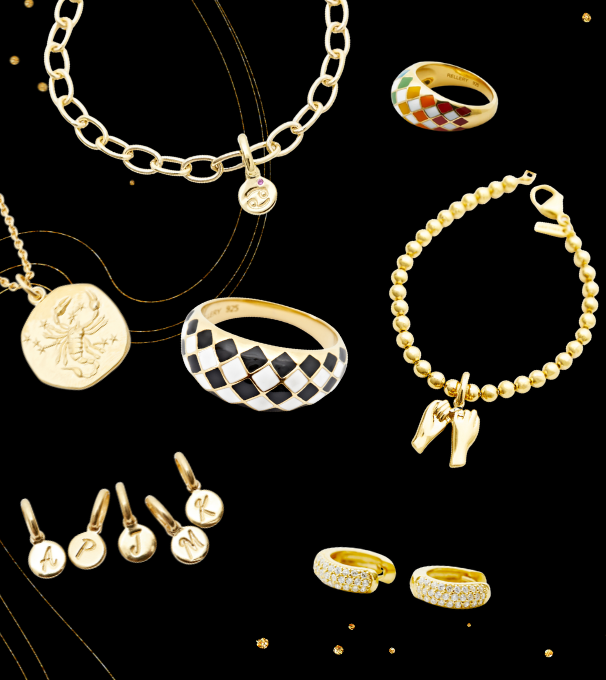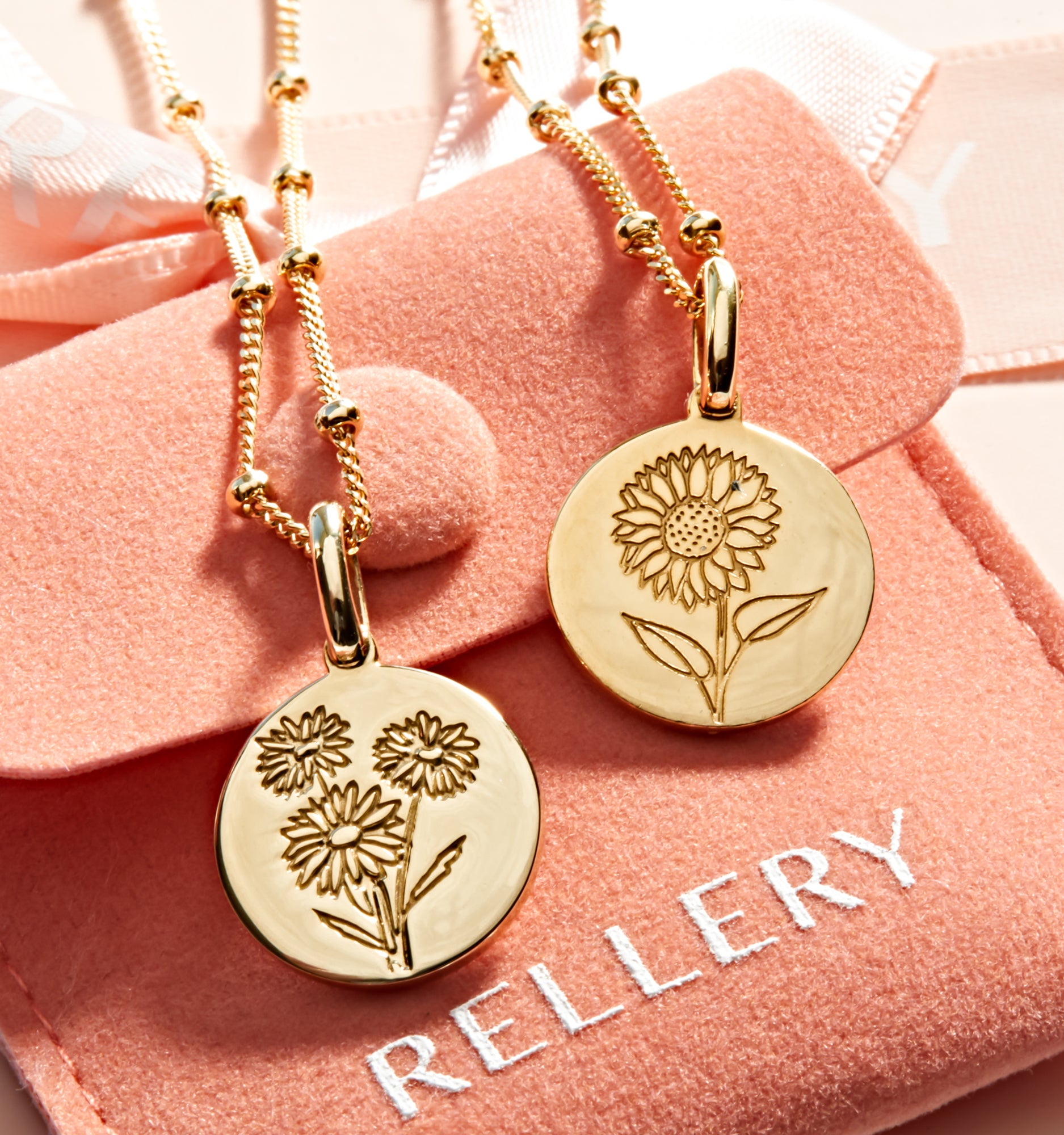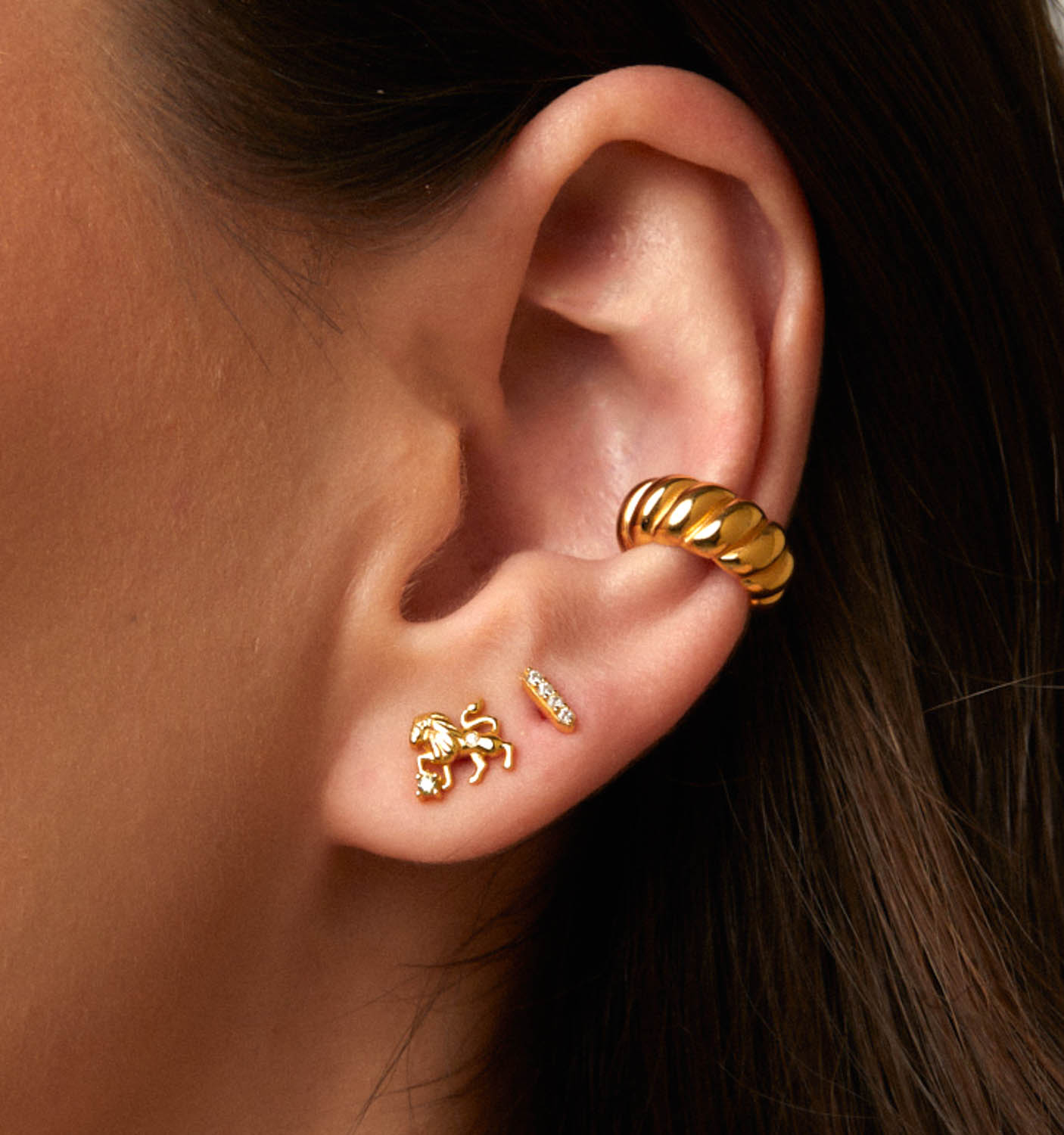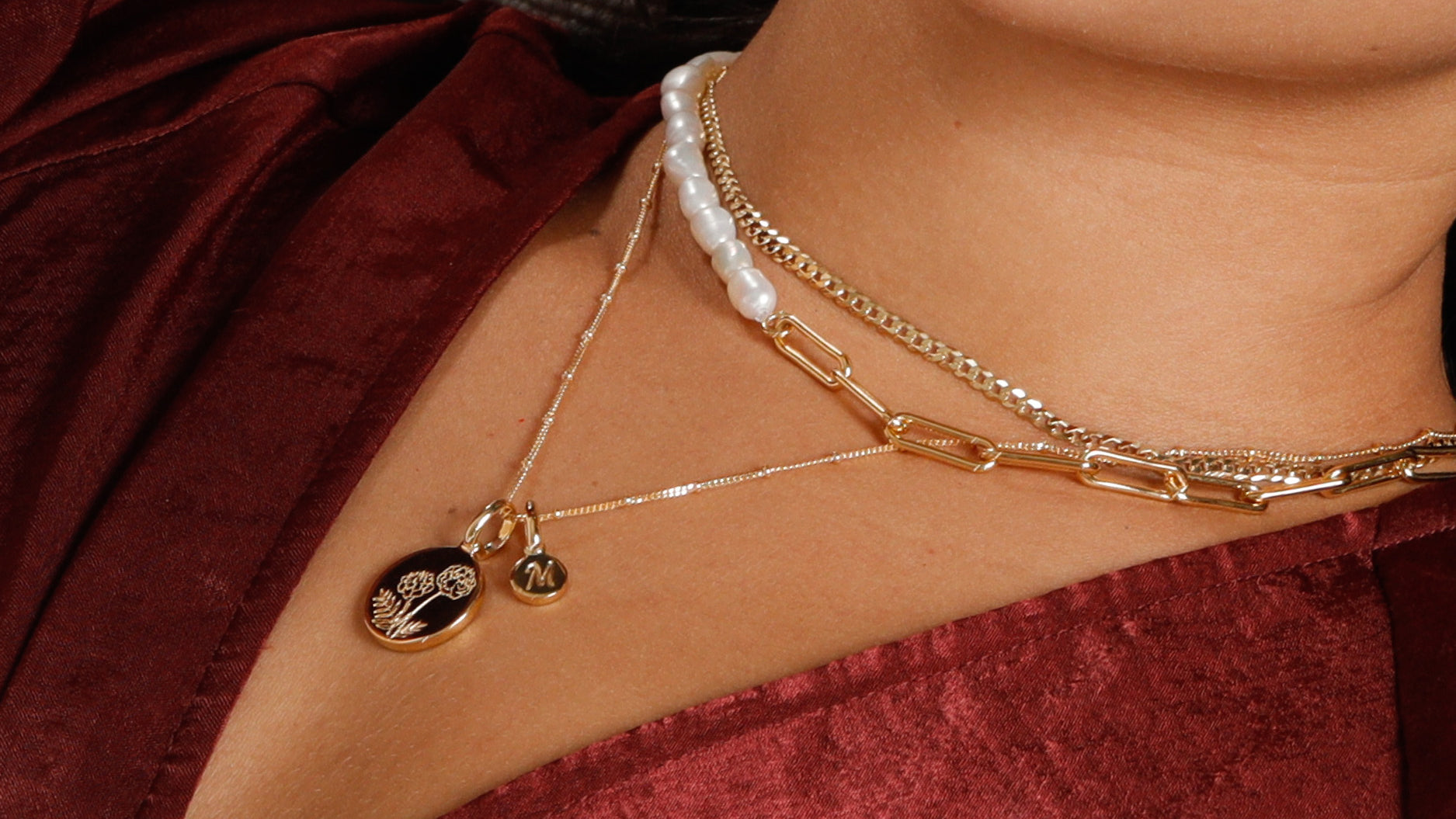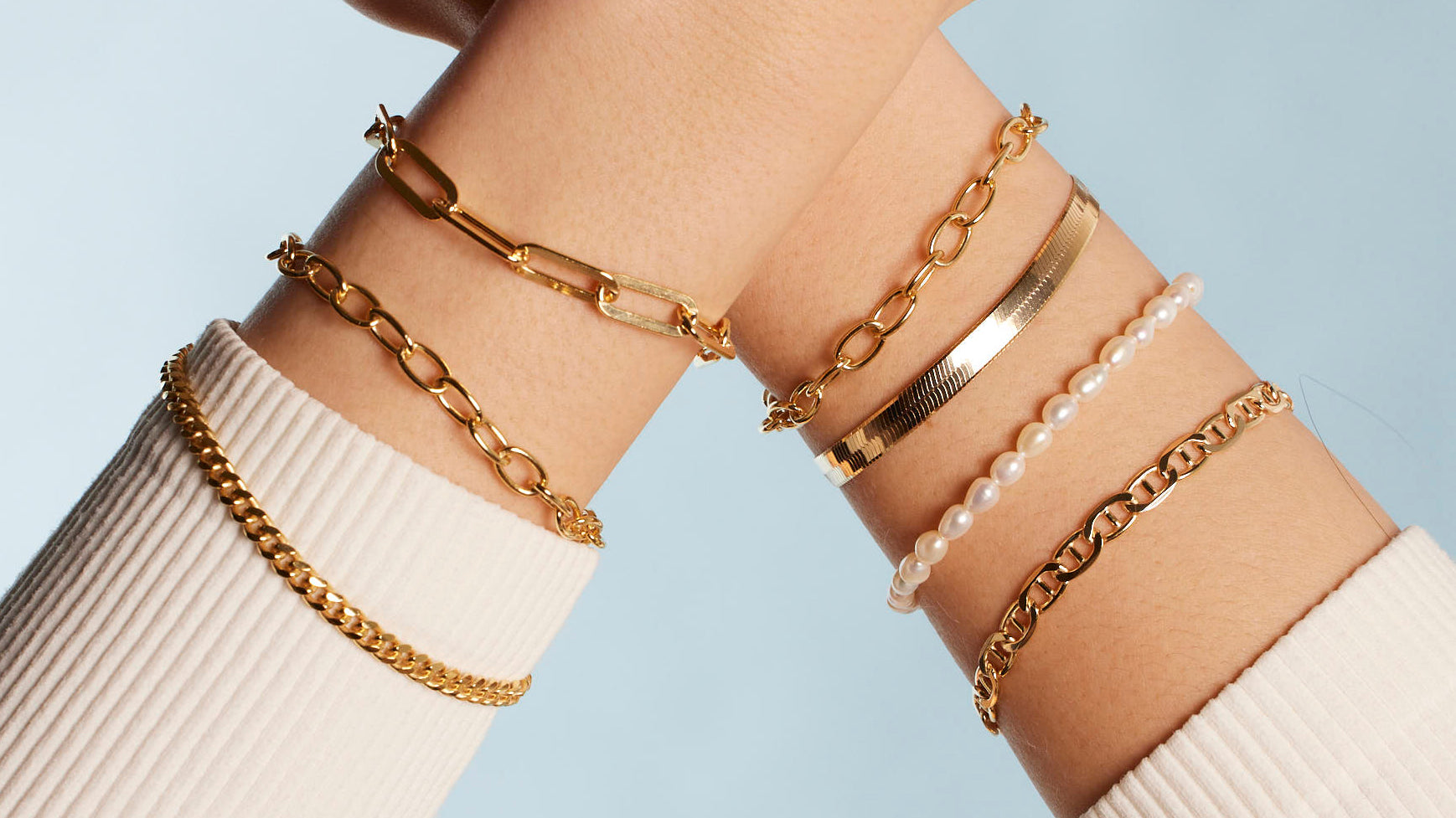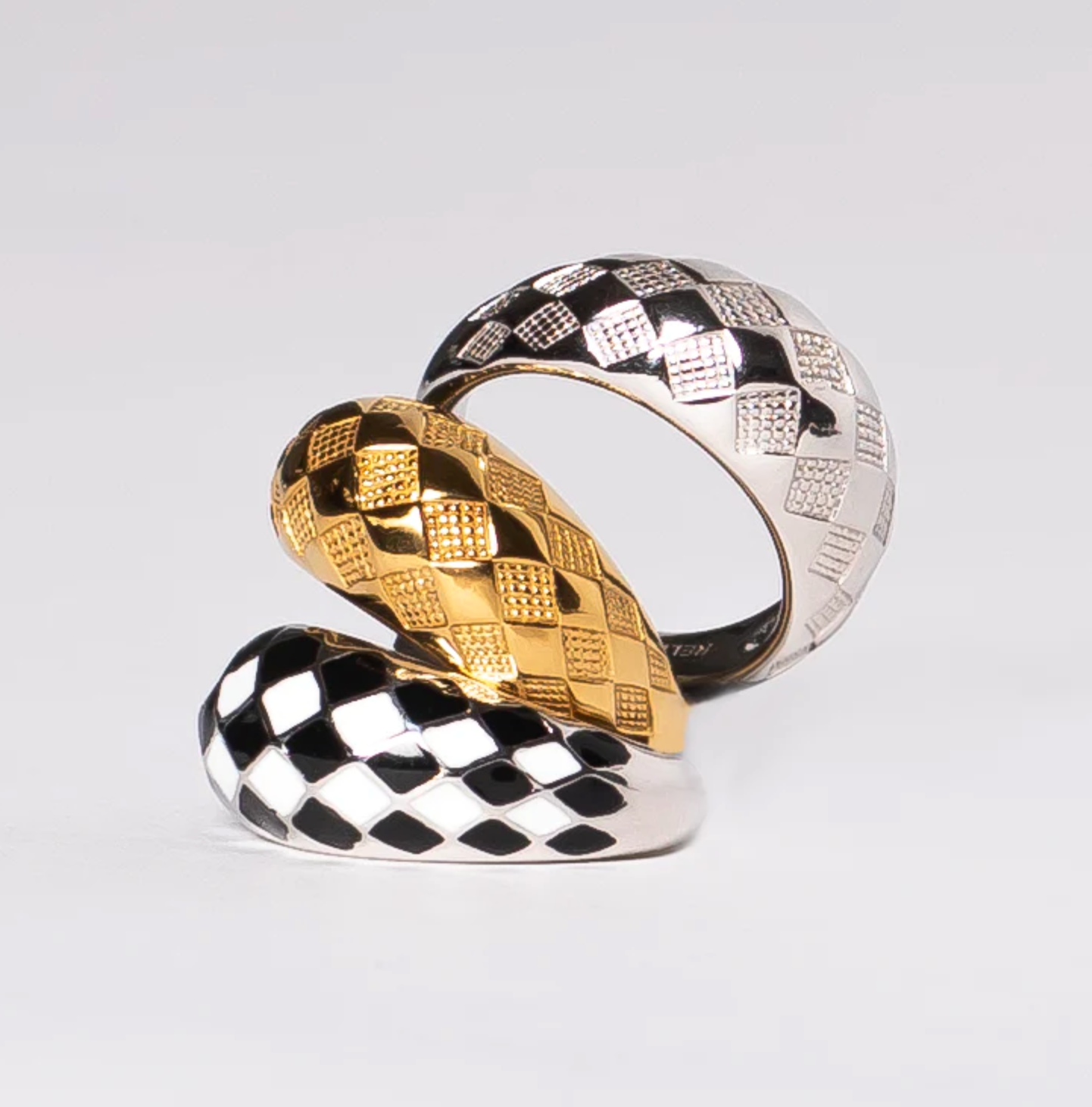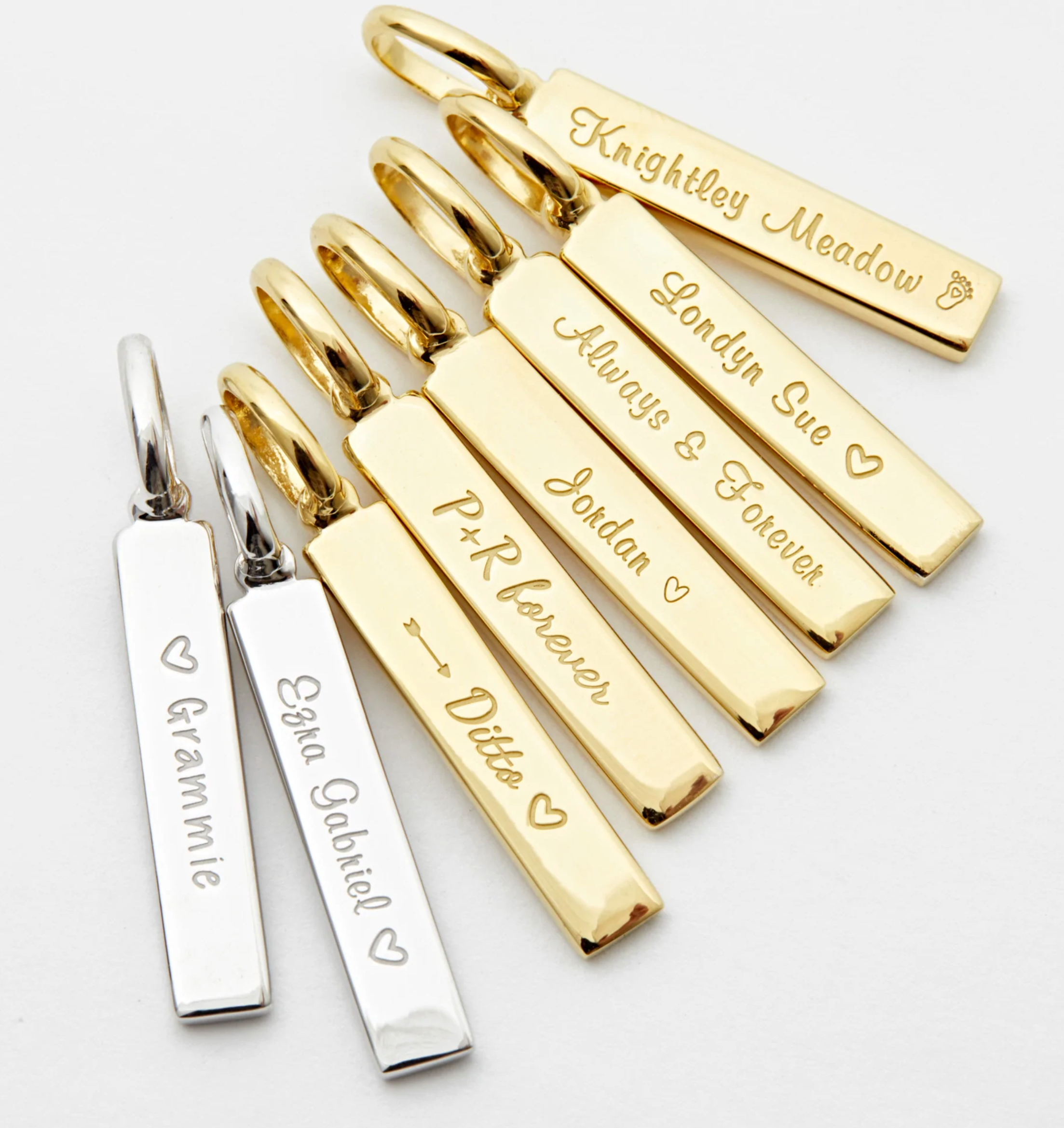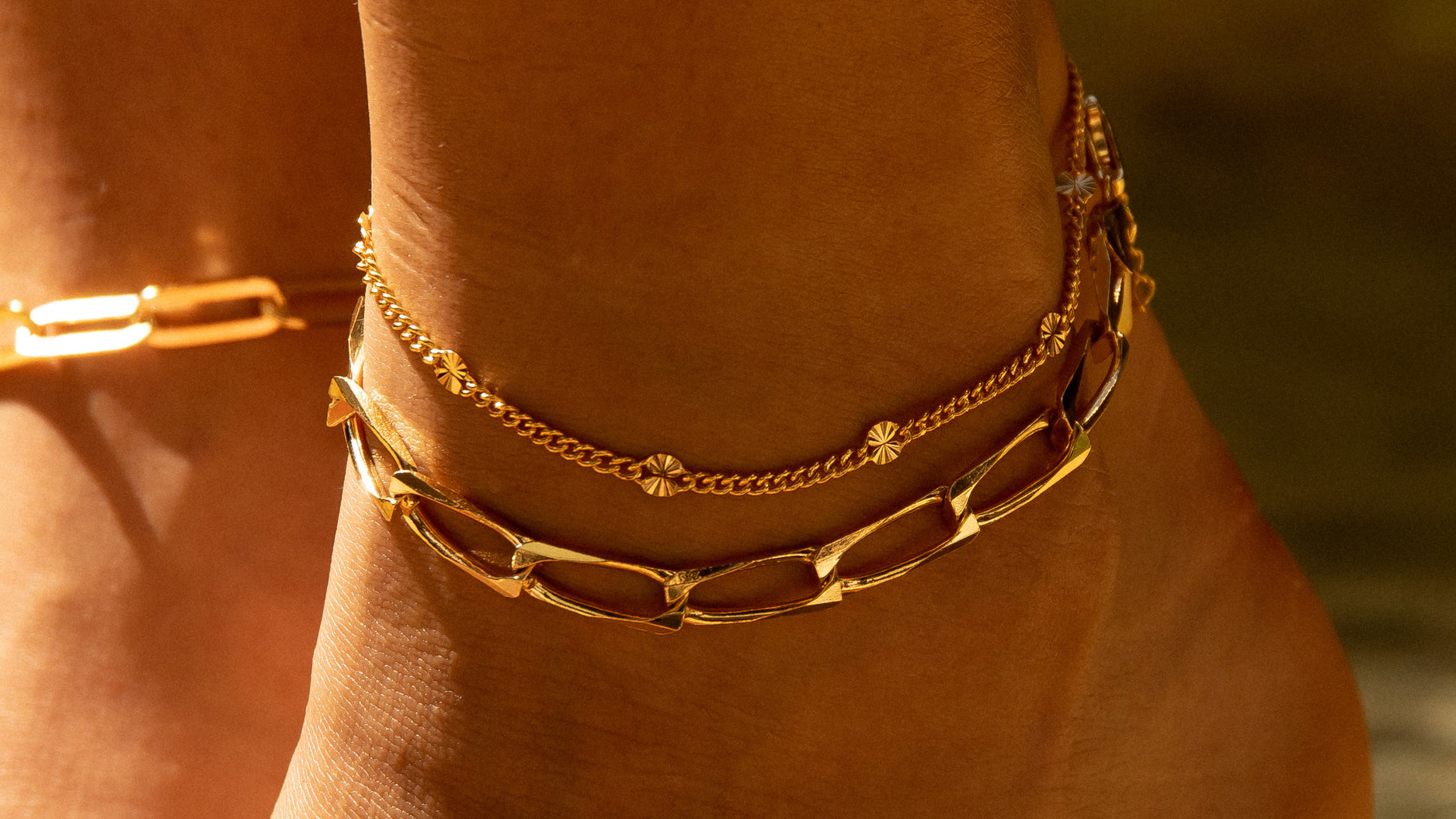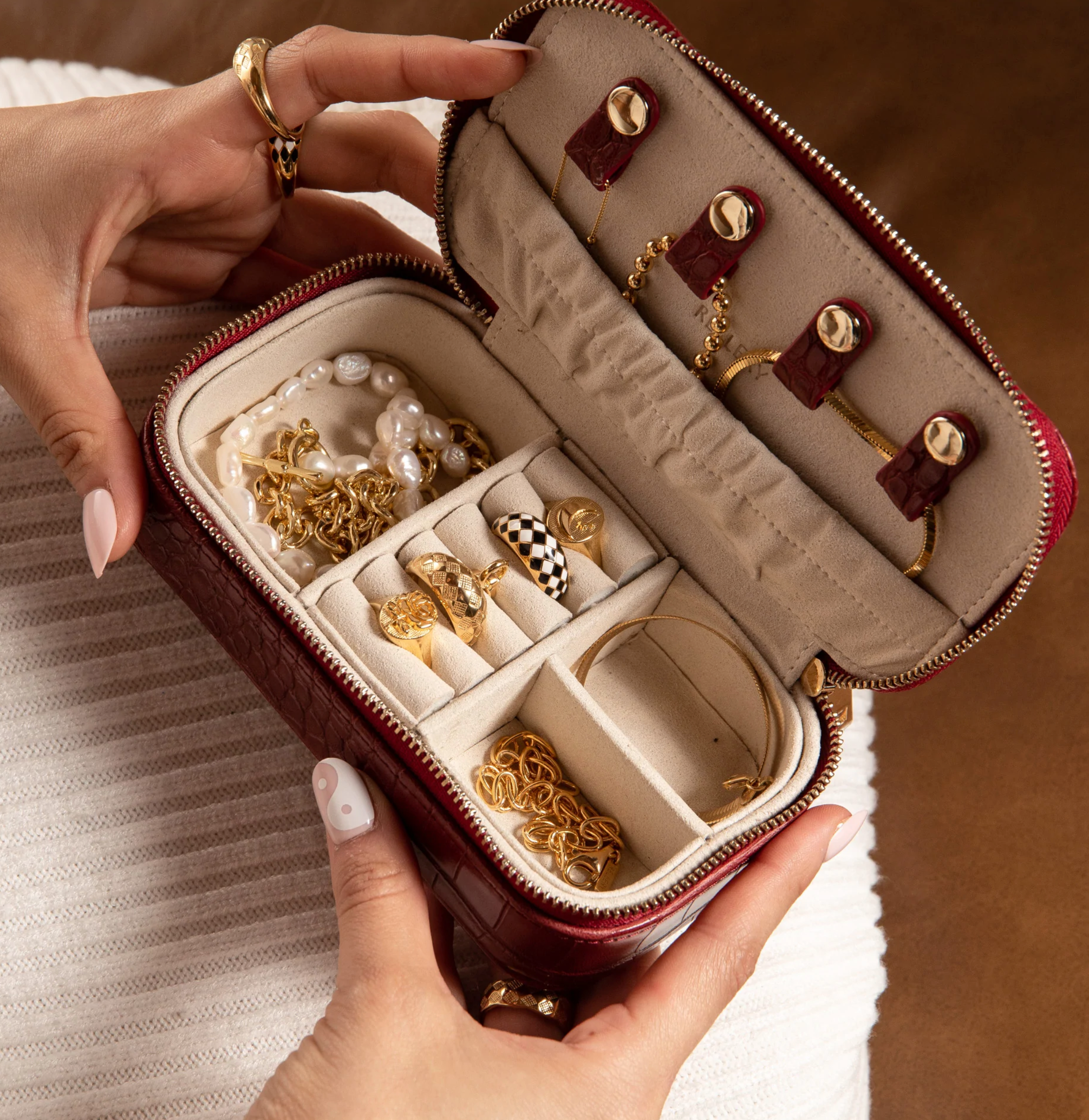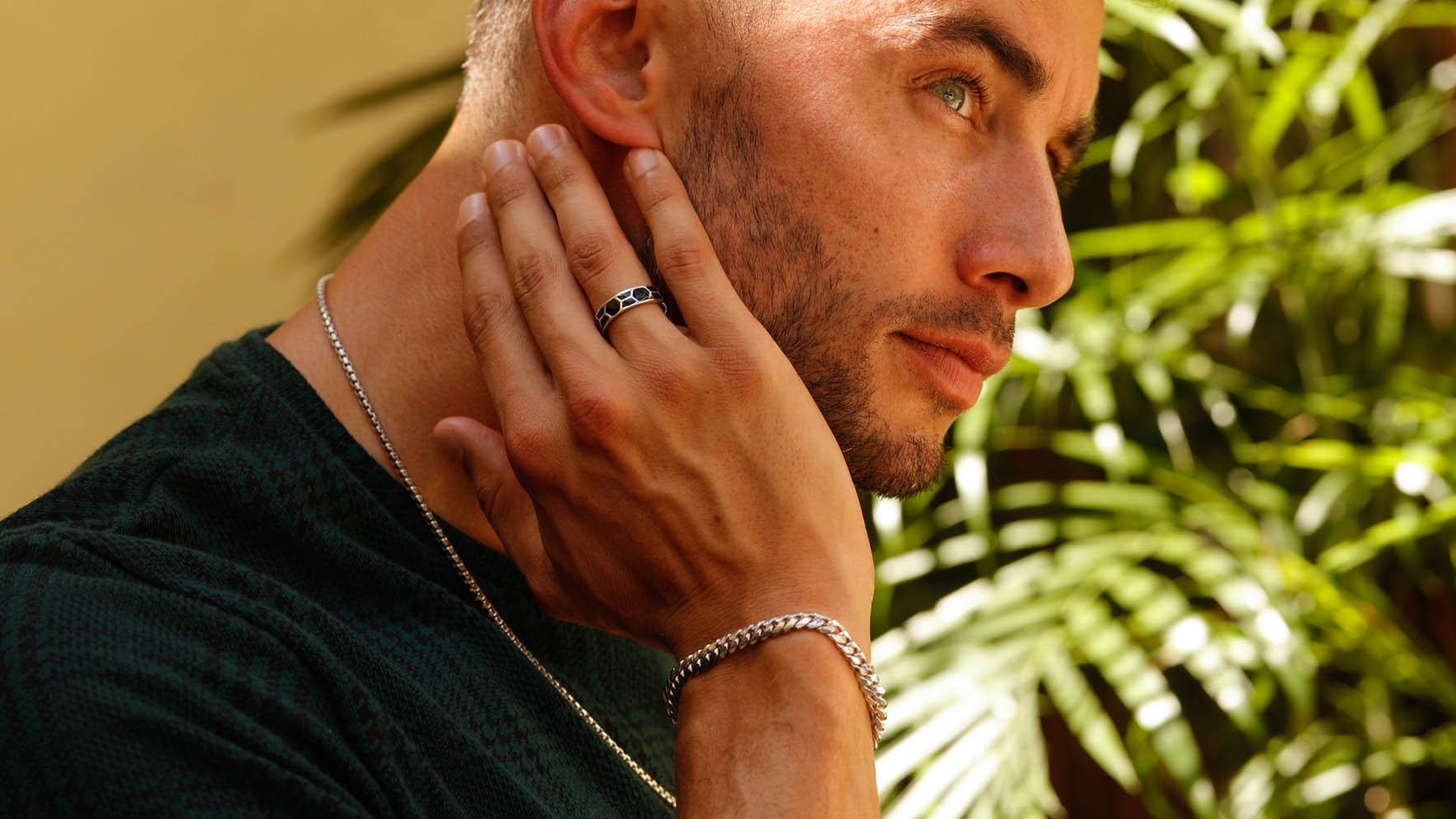Precious metals are said to have originated from the farthest reaches of the universe, in the form of meteorites that struck the earth’s surface more than 200 million years ago.
How cool is that?
This makes them very special; the selection and personalization of the perfect metal and stone combination almost a celestial bond between jewel and owner.
So, what are your fave pieces made of? Discover the different types of metals used in jewelry, and we’ll dive in deep on how white gold and yellow gold differ and what they are.
Gold, Silver, and Copper: The Noble Metals
So what is jewelry made of?
There are three noble metals:
- Gold
- Silver
- Copper
What makes each one special?
Gold
Gold must be mixed with alloy metals because gold is a very soft metal on its own. While it does not rust or corrode, it is easily dented and scratched. It is commonly alloyed with silver, copper, nickel, zinc, or titanium to strengthen the metal.
The amount of pure gold is measured in karats. Pure, unadulterated gold is 24 karats. This is rarely used in jewelry because it would be too soft to wear. It is so pliable that it can even be sewn into thread or molded by hand like clay. That will just not work!
It is not just classic, but ancient – believed to be the first metal ever wrought by humans.
Silver
Silver is more abundant than gold or platinum and much less expensive. It tarnishes easily, unlike gold, and requires a good deal more polishing and care. It is more reflective than any other metal and more electrically conductive.
It is slightly harder than gold. Sterling silver is an alloy containing 92.5 percent silver and 7.5 percent of other metals. And, what’s cool is that silver is typically associated with the moon and femininity. Um, yes, please!
Copper
Copper is a soft, shiny metal that is very malleable, making it ideal for industrial use. Two common copper alloys are bronze and brass.
Antique copper develops a patina. A patina is what happens to metals when it is left open to the elements and a layer of oxidation forms. The flecks of turquoise you see in aged copper and bronze are actually protecting the metal from the more destructive and corrosive red rust.
And, copper looks great on just about anyone when it comes to jewelry.
Alloys
Alloys are made by melting down precious metals with more common base metals, such as palladium, zinc, or titanium to increase durability.
Yellow and rose gold will have more copper, whereas white gold will have more silver. Platinum is usually alloyed with iridium, resulting in a bright white, iridescent shine.
It is important to know that many of these alloys are not hypo-allergenic. Nickel, for example, is a base metal used in less expensive jewelry that can stain skin or cause allergic reactions, as it breaks down into chlorides and sulfides when continuously exposed to moisture.
Be certain to know what types of materials your jeweler is using, and only purchase from those that use precious metal alloys that are safe and built to last.

So What is White and Yellow Gold? Are They Different?
Yellow Gold
Yellow gold is pure gold mixed with alloy metals such as silver, zinc, and copper. In the United States, jewelry items must be at least 10 karats to be considered “gold.” Anything higher than 18 karat gold is not recommended for rings as the metal is not strong enough to mount a stone, but simple jewelry like chains can be up to 22-karat yellow gold.
Clear, faceted jewels like diamonds or colorless topaz give a nice contrast to the classic look of yellow gold. Deep green and blue gemstones such as malachite or lapis lazuli look especially beautiful as well. Yellow and rose gold will look best on those with warm undertones, and really flatter olive to darker skin.
White Gold
White gold is pure gold mixed with an alloy of palladium, silver, or nickel. It is most frequently made up of 14k or 18k gold. It is stronger and more durable than yellow gold, but it needs to be cleaned frequently and re-plated every three to five years to maintain its luster.
It is often coated with rhodium, a corrosive-resistant, and highly reflective metal from the same family as platinum. Rhodium re-plating, often called “dipping,” is usually priced at around $60 to $125 depending on the piece. This can be done at most jewelers.
White gold will always have a slightly off-white tint to it compared to platinum or silver, but it is a great deal less expensive for a similar aesthetic if you don’t mind the upkeep. It is more versatile and looks good on all skin tones, but especially fair or rosy, cool-toned skin.
What Type of Gold Looks Best on Me?
If you are having trouble determining what color metal is best for your skin tone, consider what type of jewelry you usually favor. If you look your best in shimmering silvers, you likely have cool undertones to your skin. If it’s gold earrings that make your eyes sparkle and your highlights pop, then you probably have warm undertones.
If you’re lucky enough to pull off both flawlessly, you may be neutral. Consider, also, how the sun affects your skin. Do you get sunburn easily, or do you tan and bronze with ease?
Still not sure? Another way is to look at the veins in your wrist. If your skin is pale with bluish or purple veins, you are more cool-toned, and white gold or platinum will look better with your complexion.
If you have warm undertones, you may notice your veins have more of a greenish color, in which case yellow or rose gold would complement your skin tone well. Those with neutral undertones will have barely visible veins that match their skin tone, and they can pretty much take their pick.
Other Metal Alloys We Love
Besides white and yellow gold, there are a couple of other neat metal alloys to think about before pressing the purchase button.
Rose Gold
Rose gold, or pink gold, is an alloy of gold, silver, and copper. A higher copper content gives rose gold its romantic, blushing hue. It originated in Russia in the 1800s and was called Russian gold. It became popular during WWII because there was such a demand for platinum metals that jewelers opted for the copper-based metals instead.
Rose gold boasts higher durability than white or yellow gold. Over time, the metal will darken into an even deeper pink hue, making it a lovely choice for wedding rings – stylish for both men and women. Diamonds, amethyst, and moonstones are just a few of the gems that are really accentuated by rose gold.
It is a particularly trendy metal at the moment, popping up in fashion, home décor, and electronics as well as jewelry.
Platinum
Platinum is rarer than gold or silver, and more expensive than both. It is also more durable as it is a pure, pristine metal. Virtually visually indistinguishable from white gold, platinum has a slightly whiter hue and brighter luster.
Platinum can be used at about 95% purity in jewelry, and it does not need to be coated in rhodium so there is no need to recoat it periodically as you would white gold. Garnets, rubies and pink sapphires can really shine in a platinum mounting. Bright, bold colors are the way to accentuate this lifelong investment.
White and Yellow Gold For the Win
Feeling like a gold expert? We hope so!
At Rellery, we are dedicated to offering you high-quality gold jewelry at a fair price. And, when it’s time for your pieces to be cleaned, send them back! We offer a lifetime tarnish guarantee.
The most memorable story is your own, so let it shine!
Sources:
https://www.popsugar.com/beauty/What-My-Skin-Undertone-Quiz-34403268
https://www.jewelryshoppingguide.com/everything-about-rhodium-plating/#



